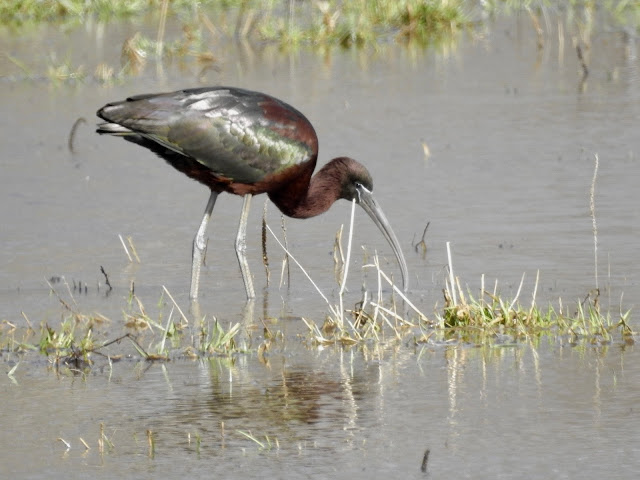Counting Migrating Sea Birds
 |
| Migrating Sea Ducks |
This week we volunteered at the Point Lepreau Bird Observatory counting migrating sea ducks. This is a scientific project sponsored by the Saint John Naturalists Club for the last ten plus years. They have built a small building literally on the 'point' of Lepreau in which 1-3 observers scientifically count the migrating sea birds that are flying past. Counts are done in 4-hour segments during which birds are counted in alternate 15-minute intervals. The count extends over about 8 weeks from late March into May. The photo above shows what is observed as the counters determine numbers and species of the birds passing quickly by.
 |
| Black Scoters |
Most of the birds passing the point are Black Scoters as shown in the photo above. The males have a bright orange blob on their bill. The female is a dull brown with a beige cheek patch. Two other species of scoters are also seen in numbers, Surf Scoters and White-winged Scoters. See the Surf Scoter male below.
 |
| Surf Scoter Male |
 |
| Common Eider Male |
Also migrating past the point in large numbers are Common Eiders. Shown above is the black and white male. The female is a cinnamon brown. Their flocks look multi-coloured with the black, brown and white colours.
Brant, a smaller member of the goose family, also migrate past the point, though in smaller numbers than the scoters and eiders. See the brant shown below. These brant were photographed at Maces Bay where they had landed to rest and feed before moving on past Lepreau and up the Bay of Fundy.
 |
| Brant |
In far fewer numbers (up to 10 or 12 per day) are the Harlequin Ducks. These are small ducks that like to feed in the surf. They are a beautiful dark blue and orange in the male and dark grey in the female and are about the size of teal. See below how beautiful they are.
 |
Harlequin Duck Male
|
We often see the hardy Purple Sandpipers which overwinter here along open coastal waters. They fly by in tight small flocks and often land on the exposed rocks at the point. They really are a dark purple colour as seen below.
 |
| Purple Sandpipers |
In addition, we usually see a smattering of land birds. Common are the sparrows which fly in and rest and feed at the point. We put out seed for them and they usually stay a couple of days before moving inland. Often seen are Song Sparrows, Fox Sparrows, Savannah Sparrows, and this week we had a Chipping Sparrow. See below.
 |
| Chipping Sparrow |
 |
| Song Sparrow |
Often raptors fly in from over the ocean as they return from their wintering grounds. Others stop by often to try to feed on the birds newly arriving at the point. Often seen are Northern Harriers, Merlins, Kestrels and sometimes a Peregrine Falcon. This week we saw a Merlin and an American Kestrel as seen below.
 |
| American Kestrel |
 |
| Merlin |
The Point Lepreau Sea Bird Counting Project is providing a large amount of useful data. Many people are involved, both volunteer and paid staff. On the day we were there during one 4-hour count period we tallied about 3300 birds. That is lower than some days but more than many others. Since we count only 50% of the time we could estimate that 6600 birds passed the point during that morning. Our data is now being used by ornithologists and other scientists and when lumped with the data from other sea bird counting stations along the Atlantic flyway, they form a large bank of useful data.





















